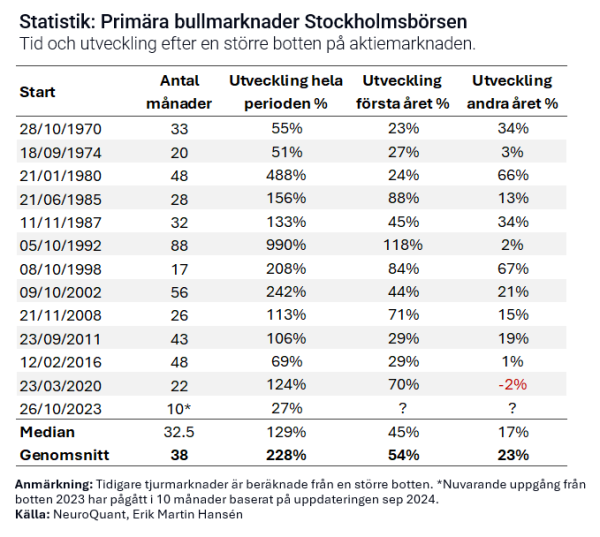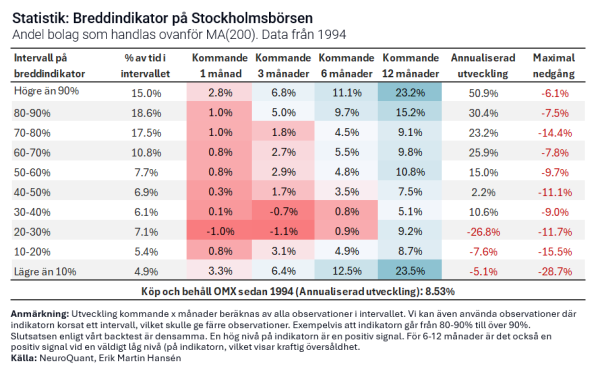Market breadth for the primary trend

By studying market breadth, we get a clearer picture of the overall strength and health of the market. Instead of focusing solely on the overall change in the index, we measure how many stocks within an index or market are participating in an up or down movement.
For investors who want to be prepared for the reversals of larger trends, which are influenced by corporate earnings and macroeconomic factors, the primary trend is the most important one to follow.
A common method for defining the primary trend is to use a 200-day moving average. However, the exact value is not the most important thing; the important thing is to use a method that can capture the long-term, cyclical trend, which usually lasts for several years.
A trend doesn't die of old age.
A typical primary bull market lasts for 32.5 months. But a trend doesn't die of old age. A trend, whether it's an uptrend or a downtrend, continues as long as the underlying factors driving that trend persist. It can only end when new factors begin to influence the market or when opposing forces begin to dominate.
It is therefore valuable to analyze specific factors that may signal a change in the dynamics of the trend – such as changes in momentum and market breadth – rather than relying solely on how long the trend has lasted.
Percentage of companies trading in a positive primary trend
Let's study the market width of the primary trend.
Statistically, history shows that the more companies that trade in positive primary trends, the better the returns over a 3 to 12 month period. Another positive signal is when the breadth indicator shows severe oversold. A negative signal is given, according to the subjective analysis, when the breadth indicator turns down from high levels.
The graph below shows the percentage of companies in the index that are trading above their 200-day moving average.
Requires login to the analysis platform to read the entire post.
Not a customer? Open an account to access our analytics service.




